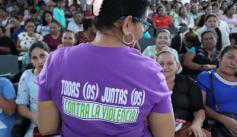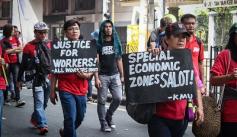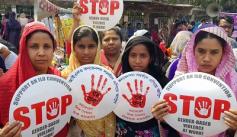Hold your keys in your hand. Stick to that street, not this one, it has more lights. Don’t go down that block, whatever you do – there’s a group of gamblers on the corner ready to scream drunkenly at you as you pass by.
It’s a dance every woman around the world is familiar with: minimizing your risk and exposure, keeping yourself safe, while trying to get from point A to point B. For garment workers in Cambodia, that dance takes place nearly every night. So much so that the Center for Alliance of Labor and Human Rights (CENTRAL), keeps a crowdsourced map up on the wall. Workers who come through the center for trainings and meetings add to the map. They draw arrows down the safest paths, and mark hazards with orange dots.


